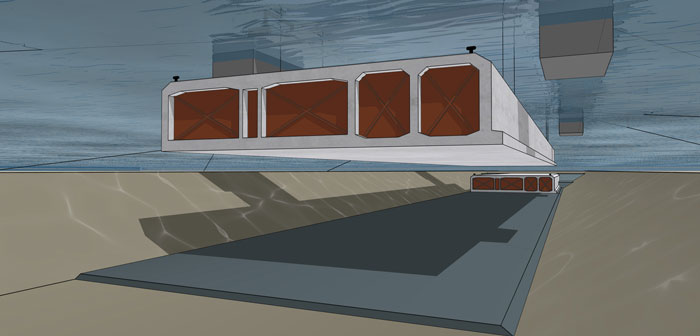
Denmark has engaged in many challenging infrastructure projects in an effort to improve transport links. Over the years Denmark has built many record breaking bridges and tunnels earning it the reputation of a global centre of structural engineering excellence. And they are about to take on their biggest project yet.
Known as the Fehmarn Belt Fixed Link , an 18km long sub sea tunnel to link the German island of Fehmarn to the Danish island of Lolland has been approved. It is thought the construction of the tunnel will have a huge impact on transport in the region and will replace about 2 million annual ferry journeys. It is also believed it will cut rail journey time between Copenhagen and Denmark by 25%.
The project has been approved in Denmark but is currently awaiting approval from the German government.
Why an immersed tunnel and not a bored one?
The size of the tunnel and the complex geology in the region were the main factors for the decision. The size of the tunnel means the project would need the largest tunnel boring machine ever built, and the geology is such that it is felt the boring equipment would not be able to deal with the multiple changes in materials (clay, sand, flint, silt etc.). In addition, an immersed tunnel is also one of the most environmental friendlier options. Whilst there will be disruption initially during construction, there is less long term disruption using this technique.
Road or rail?
 Both. It is planned for the tunnel to have twin railway lines, 4 motorway lanes and a separate emergency tube. The rail network is supported by the EU as it will close the current gap between the Scandinavian and European railways. Freight trains will be able to avoid the current 160 km longer detour via the Great Belt, improving trade links and encouraging more competition in the region.
Both. It is planned for the tunnel to have twin railway lines, 4 motorway lanes and a separate emergency tube. The rail network is supported by the EU as it will close the current gap between the Scandinavian and European railways. Freight trains will be able to avoid the current 160 km longer detour via the Great Belt, improving trade links and encouraging more competition in the region.
Construction
The first phase of the operation will be to construct a purpose built manufacturing facility and harbour where the production lines will be set up for casting of the reinforced concrete elements.
The tunnel will be made from pre fabricated concrete sections which will be placed in to a trench dug on the seabed. Each section will weigh more than 73,000 tons and will be more than 200m long. Some sections will have additional underneath decks to allow for maintenance work when the tunnel is in operation.
Watertight steel bulkheads will be added to the ends of each section before it is placed in position above the trench and then lowered. Once in the trench each section will be lined up with the previous one and huge rubber gaskets will form a watertight chamber between the steel bulkheads. As each section is secured it will be covered with a protective layer of stone and the top will sit level with the seabed. Once the sections are all in place, the internal road and rail infrastructures will be put in place.
Technology
The technology for traffic management and safety is yet to be confirmed but there are plans for how the insides of the tunnel will appear to make the road journey less monotonous and more like a traditional road journey.
It is anticipated the project will take 8 years to complete. When finished it will be one of the most advanced links of this kind in the world.
This is a huge manufacturing and engineering operation – what are your views on the project?
Images: www.femern.com
This site uses Akismet to reduce spam. Learn how your comment data is processed.


 Mail:
Mail: 




Leave a Comments